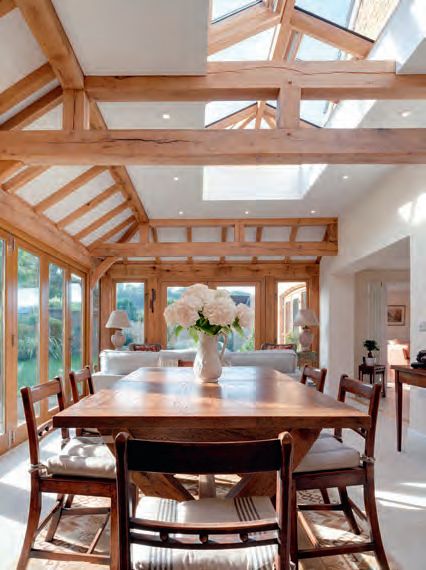Opinder Liddar

SASA Works added this geometric sunroom featuring oak frames and birch wood internal panels onto an Edwardian house. The roof angle has been specifically designed to allow maximum light gain and internal height
ALISON HAMMOND
With spring on the horizon, what better way to soak up the longer daylight hours than in the comfort of your own home? Large spans of glass will help brighten spaces, and one particularly popular method of creating a lightfilled area that can be used all year round is a sunroom. These additions are more integrated into the house than conservatories, and are usually completed using the more core construction materials. They are specifically designed to strengthen the connection between indoors and out, allowing more natural illumination into the house and better views of the garden, while also helping to provide ample warmth via solar gain.
Replacing conservatories
Renowned for being too cold in winter and too hot in summer, many conservatories are built using glass that does not conserve heat efficiently, meaning the room temperature is controlled by the outside climate and levels of sunlight. These spaces rarely have a heating system and often don’t meet the standards for conserving fuel and power, as well as ventilation, that are set out in the Building Regs.